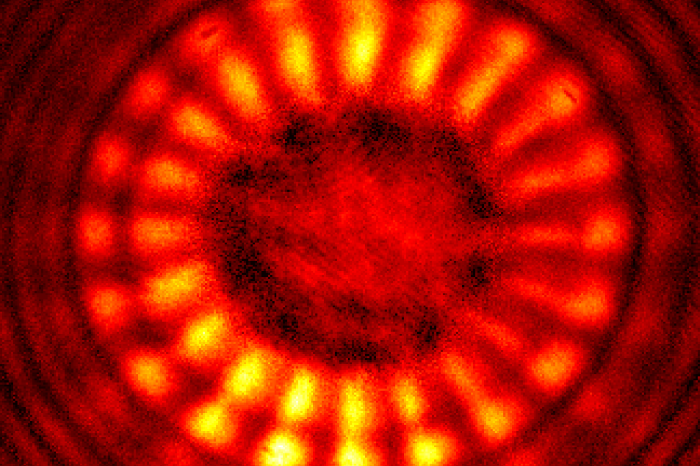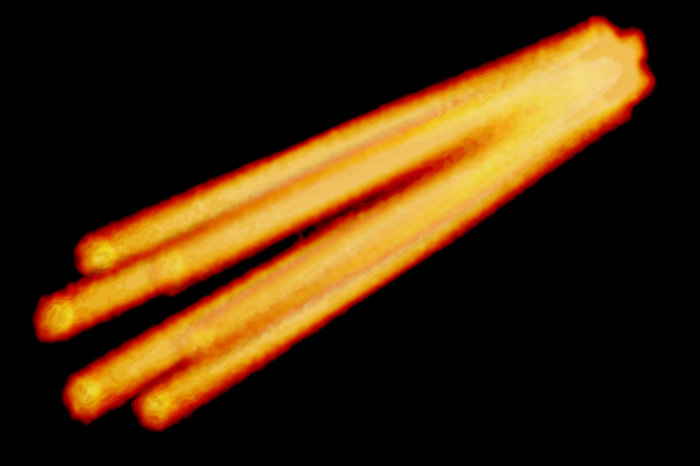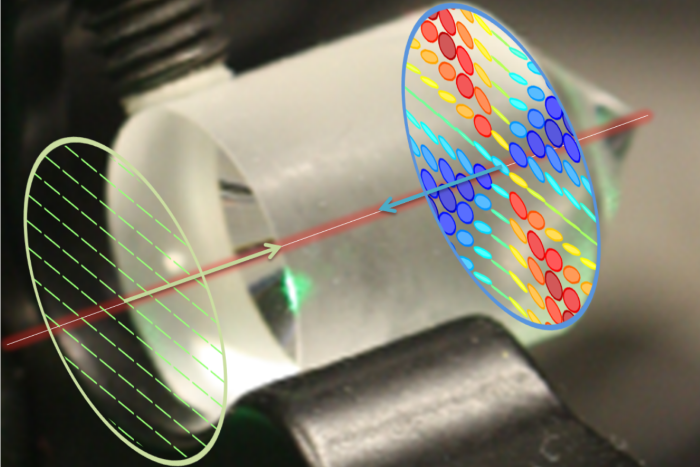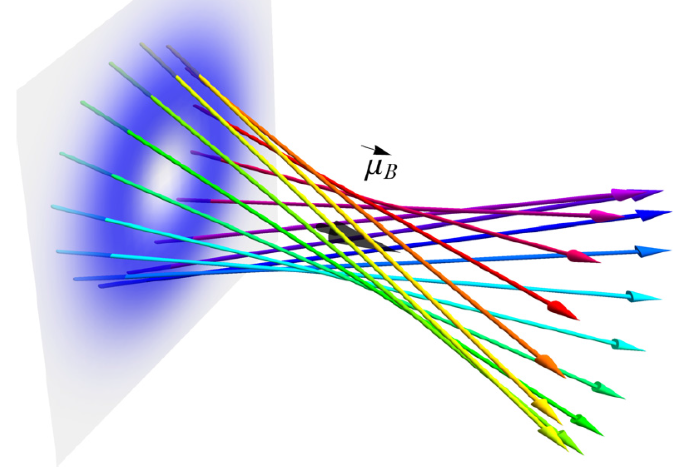
Atom optics and shaped light
Images, and in particular quantum images, provide a highly efficient method to store information. Conventionally we use only brightness and colour, but additional (invisible) structure can also be encoded into the phase and polarisation of a light field. We are interested in the storage and manipulation of such images by interaction with atoms. Our main experiment is based on a magneto-optical trap which contains high-density rubidium atoms at some 100 micro Kelvin, but we also use atomic gasses at room temperature or above.
We rely on state-of-the-art technologies to generate and measure shaped light and are actively developing various methods based on spatial light modulators, interferometers and conical reflection.
PhD and postdoc positions: We are always happy to discuss research proposals that interest you and that would fit in with our activities. Please contact Sonja Franke-Arnold for further details.
Structures in cold atoms
Atoms are ideal sensors for the full vectorial light field, including its amplitude, phase and polarisation. Our experiments are performed in a high density holographic SpOT trap, and we have recently generated spatially dependent EIT, controlled by the phase profile of the probe light.
Structures in hot atoms
We study the propagation of structured light through atomic rubidium vapour. Atomic scattering allows us to visualise 3D light structures, and nonlinear light matter interaction allows us to transfer spatial information between light at different frequencies.
Phase and polarisation patterns
We are using and developing techniques that can generate light beams with arbitrary phase and amplitude profiles, and more recently also spatially varying polarisation patterns. We have recently demonstrated polarisation vortices encoded in white light.
Electron vortices
Together with MCMP we are applying optical concepts of phase singularities to free electrons. Unlike photons, electrons carry charge and mass, so that electron vortices are associated with a magnetic dipole moment which affects their interaction with fields and matter.
Selected Publications
Radwell, N., Hawley, R. D., Götte, J. B. and Franke-Arnold, S. (2016) Achromatic vector vortex beams from a glass cone. Nat. Commun. 7, 10564
Clark, T. W., Offer, R. F., Franke-Arnold, S., Arnold, A. S. and Radwell, N. (2016) Comparison of beam generation techniques using a phase only spatial light modulator. Opt. Express 24(6) 6249-6264
Radwell, N., Clark, T. W., Piccirillo, B., Barnett, S. M. and Franke-Arnold, S. (2015) Spatially Dependent Electromagnetically Induced Transparency. Phys. Rev. Lett 114, 123603
Greenshields C. R., Stamps R. L., Franke-Arnold S. and Barnett S. M. (2014) Is the angular momentum of an electron conserved in a uniform magnetic field? Phys. Rev. Lett. 113 240404
Radwell, N., Walker, G. and Franke-Arnold, S. (2013) Cold-atom densities of more than 1012 cm-3 in a holographically shaped dark spontaneous-force optical trap. Phys. Rev. A 88, 043409
Walker, G., Arnold, A. S. and Franke-Arnold, S. (2012) Trans-Spectral Orbital Angular Momentum Transfer via Four-Wave Mixing in Rb Vapor. Phys. Rev. Lett. 108, 243601
For a full list of publications, see the Enlighten pages of Sonja Franke-Arnold and Neal Radwell.





